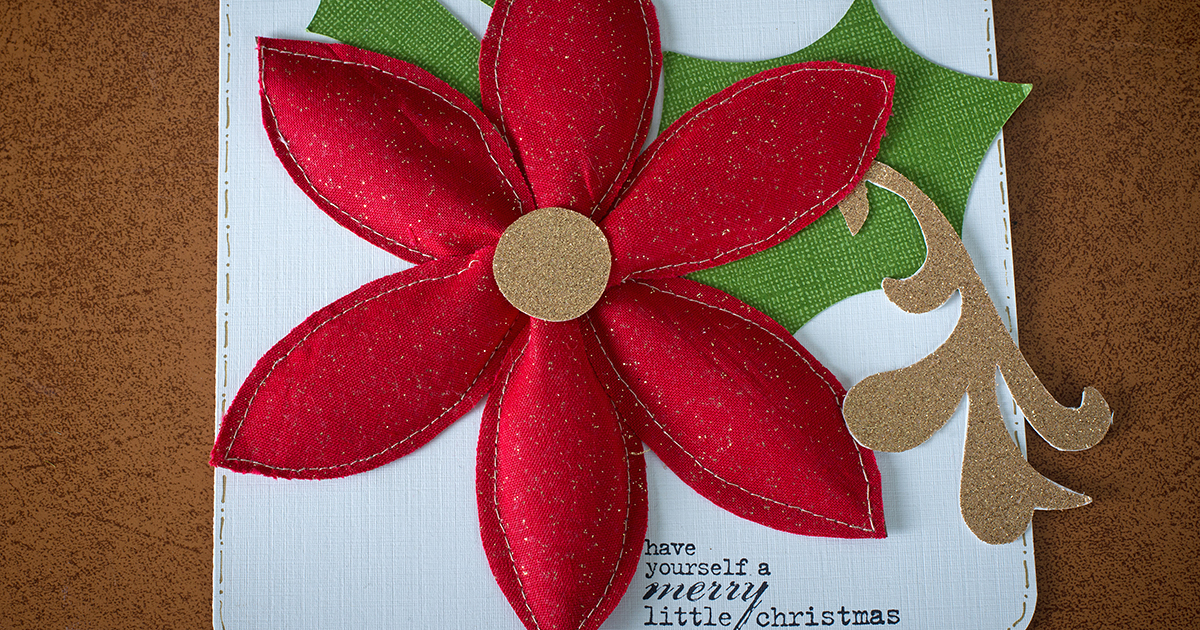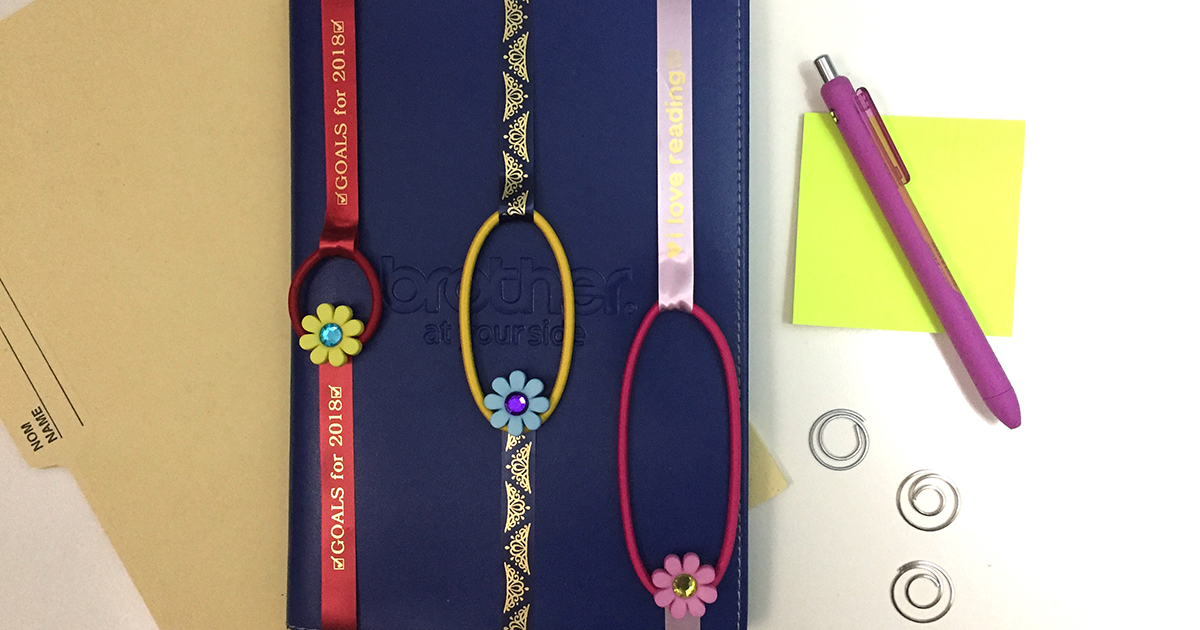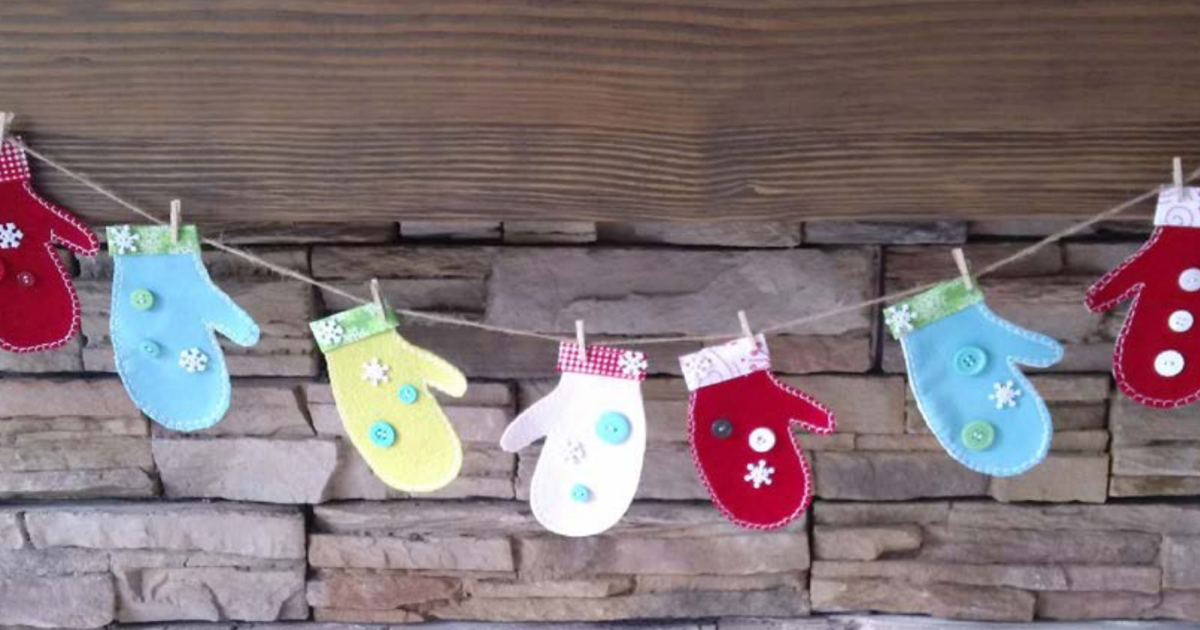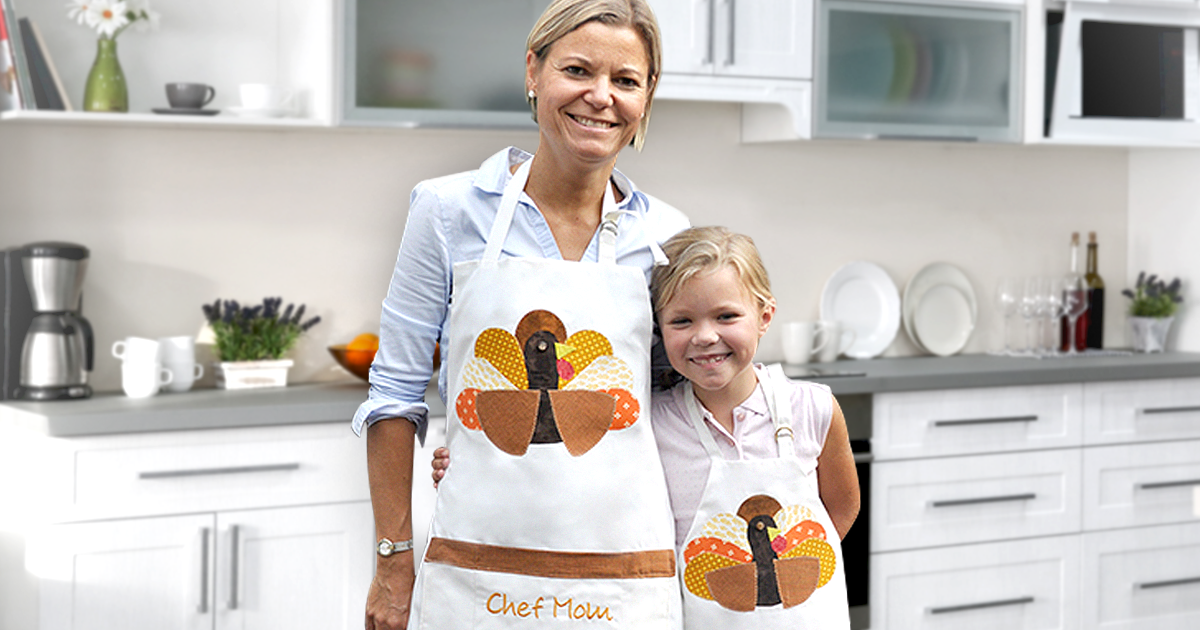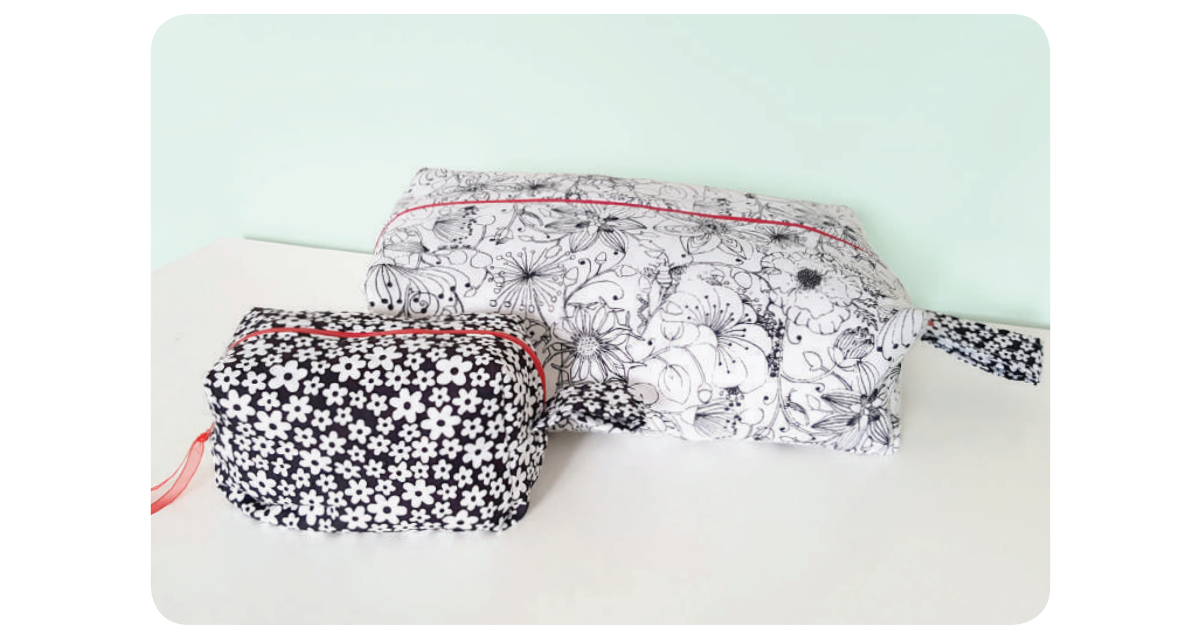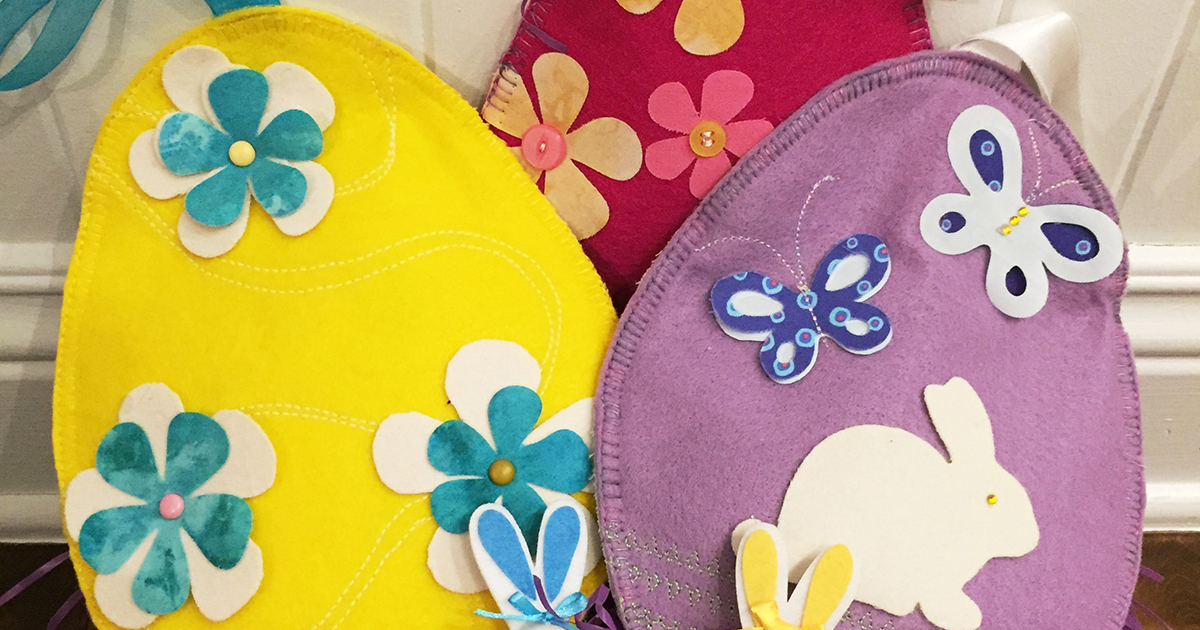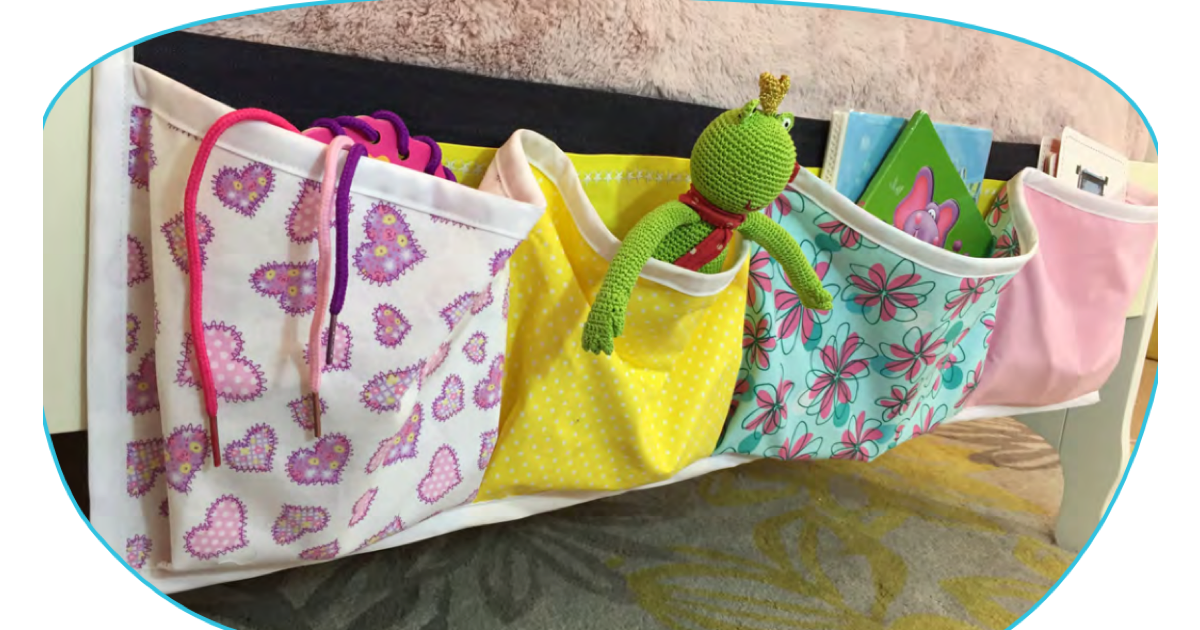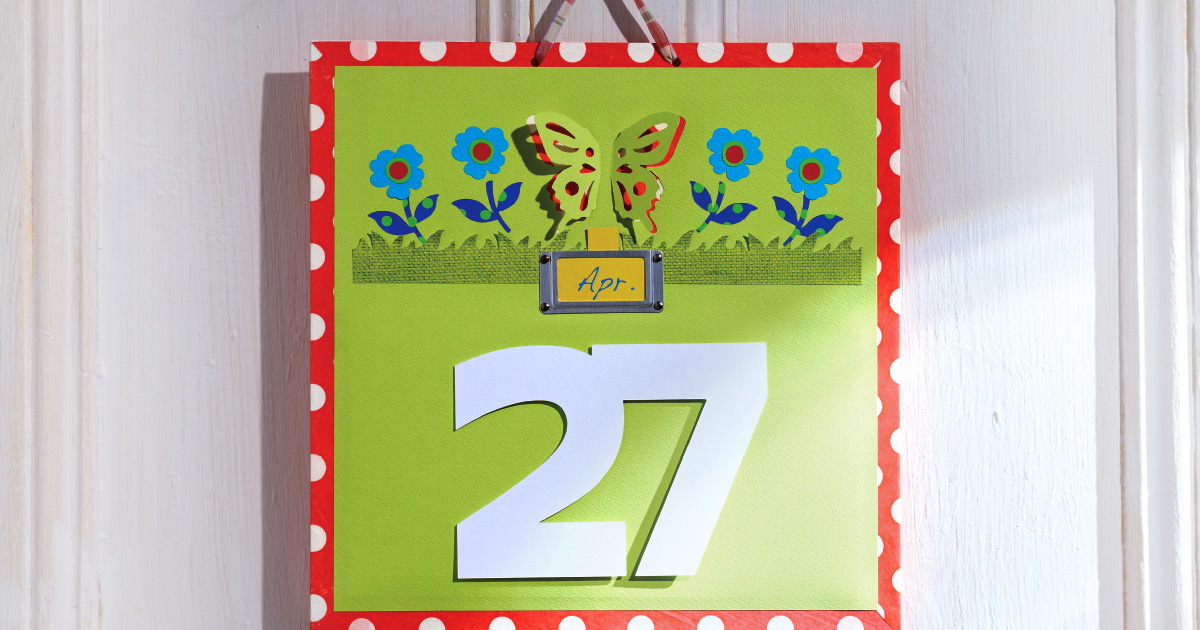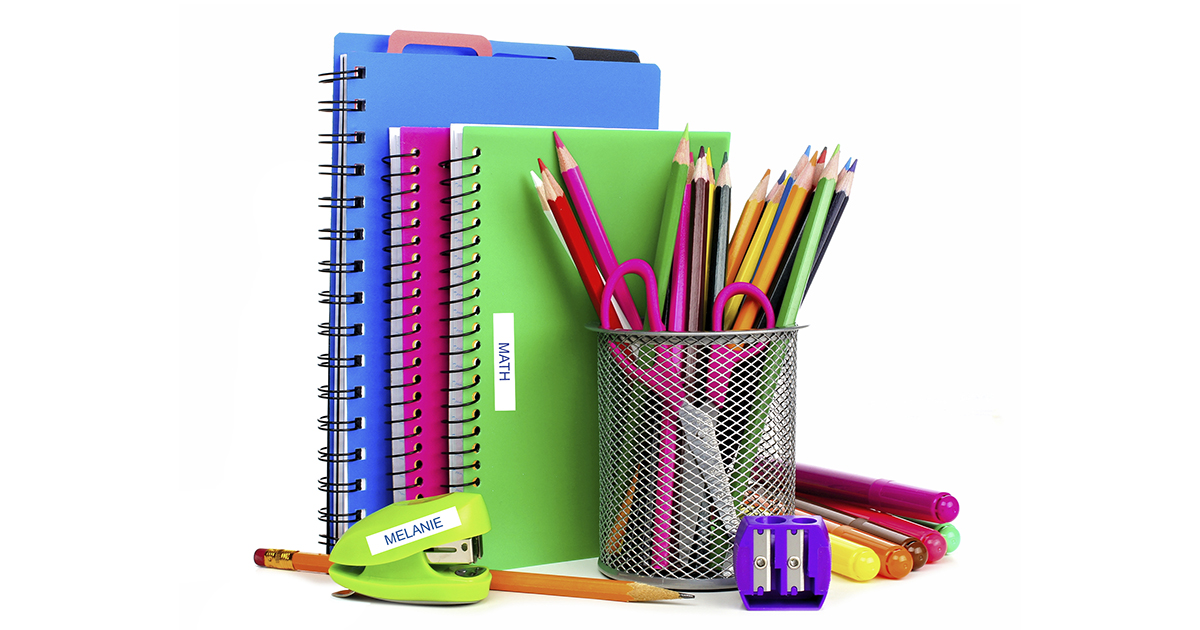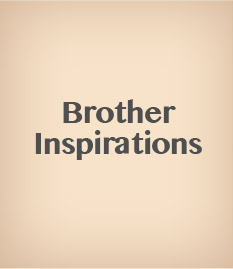
This project highlights the Brother Open Toe accessory for the Brother MuVit™ Dual Feed Foot. The MuVit™ foot is motor driven and powerful, with digital controls, for precision and accuracy. Designed for use with Brother V-Series machines, it’s the ultimate even-feed foot, providing great feeding for a multitude of sewing tasks. (You can also substitute alternative Brother models with a standard or open toe walking foot for quilting the tote.)
Materials
• Brother Sewing Machine
• SA195 Open Toe Brother MuVit™ Dual Feed Foot for use with Brother V-Series machines
• Brother Standard Walking Foot or SA188 Brother Open Toe Walking Foot for alternative Brother model machines
• SA185 Brother ¼” Piecing Foot with guide
• Basic sewing notions, including sewing thread to match or blend with fabrics and a wash-away marker
• Machine quilting needles, size 11 for patchwork and size 14 for bag construction
• Optional (but helpful) quilting notions include a 24” quilt ruler, rotary cutter and cutting mat. You can carefully draw cutting lines with a fine wash-away marker and then cut pieces with scissors
Fabric and Notion Requirements
• Pink quilting cotton: ½-yard total, for patchwork and bag lining
• Orange quilting cotton: ½-yard total, for patchwork and bag lining
• Thin cotton batting, two pieces measuring 16” square
• Ribbon for handles: 1¾ yards of 7/8”-wide pink grosgrain ribbon and 1¾ yards of 1½”-wide orange grosgrain ribbon
INSTRUCTIONS FOR CUTTING PATCHWORK PIECES
Step 1
Cut one 16½” square from pink fabric. Cut one 16½” square from orange fabric. Reserve remaining fabric for cutting lining in a later step.
NOTE: Only one block is shown in many of the illustrations. You’ll need to create two identical pinwheel blocks: Block One for the front of the tote and Block Two for the back.

Figure #1

Figure #2
Step 2
Follow the steps below to mark and cut each of the two 16½” squares:
• Mark a small dot or dash at the precise centre of the top, bottom, and sides of each square. (See Figure #1.)
• Place the squares on your cutting surface, with the right side of the fabric facing up. Cut each square into eight triangles, cutting diagonally from corner to corner, and then cutting across the square from top to bottom and side to side. Cut, but don’t separate the pieces until the next step. (See Figure #2.)

Step 3
Lay out each of the two blocks in preparation for sewing them together. Divide the pink and orange triangles to create the two pinwheel squares. Each block should be identical. Arrange the blocks using Layout Guide A, positioning each of the triangles with the right side facing up.
INSTRUCTIONS FOR SEWING PATCHWORK PIECES
Step 1
Prepare to sew pieces together for each of the pinwheel blocks as follows:
• Working from left to right in a clockwise fashion, layer one orange triangle on top of a matching pink triangle.
• Prepare to sew by pinning along the long edges of the triangles. For each block, you’ll have four sets of triangles. (See Figure #3.)
• Keep each of the four sets separate. Label the sets Block One and Block Two.

Figure #3
NOTE: Handle the cut-and-pinned pieces gently to avoid stretching the edges and causing a distorted seam. For increased accuracy, cut, layer and then pin the pieces together while working on a flat surface.
Step 2
Set up the machine for sewing a ¼” seam by selecting a centre needle straight stitch. If you’re working on a V-Series machine, you can further enhance the accuracy of your ¼” seam by using the Sew Straight™ Laser Vision Guide in addition to the ¼” foot. (See Figure #4 for more information.) Set the stitch length to 1.8 to chain piece your patchwork and avoid backstitching the seams. Once you’ve positioned your fabric along the edge, watch the fabric along the edge guide (not your needle) as you stitch, and your seams will remain consistent.

Figure #4
TIP: When sewing a ¼” seam, you can adjust the settings as desired for a scant ¼”, or a deeper ¼”. Move the needle position slightly to the left or to the right to adjust for the thickness of the fabric layers. Moving to the left results in a slightly deeper seam. Moving to the right results in a scant seam. Make sure your needle stays within the opening of the foot. Different fabrics produce different results. If you need a scientific ¼” seam, test it on scraps before sewing your quilt blocks. (In many cases, however, the main consideration is consistency rather than having a scientific seam.)
2. Take the pinned pieces to the machine. Begin to sew the first piece, with the pins facing you. Remove pins as you stitch and push the beginning of the next set of pieces right up against the end of the first. (This is called “chain piecing.”) If necessary, lift the presser foot slightly to position the next piece. Sew all pieces for Block One, and Block Two, keeping each set separate to avoid confusion.
Leave the thread tails connecting the pieces together until you reach the ironing surface.
3. Take pieces to your ironing station. Clip the thread tails holding the pieces together. Open up the triangles and press each one with a dry iron, pressing seams toward the orange fabric.
4. Snip off points extending from each piece. Lay out four squares for each block using Layout Guide B. Pin and then chain piece the squares together so you have two halves for each block. Leave the joining thread tail in place and press seams toward the orange fabric. Snip off points as you did previously.
5. For the final seam on each block, begin by pinning the two halves together, paying careful attention to the centre area where the seams meet. Here, you’ll need to finger press the seams so they’re opposite one another. (They shouldn’t be on top of one another. Instead, each one is pushed in the opposite direction from the other.) The seams should be pushed snugly together at the centre, with all of the seams coming together for a neat centre point. The thread tail holding the pieces together will help you accomplish this. To check seams prior to sewing, push a pin into the centre intersection. When seams are properly aligned, the pin should intersect the seam on both sides.

Figure #5
6. Sew the last patchwork seam on each block, making certain seams stay flat, facing in the proper direction as you stitch. (See Figure #5.) Raise the presser foot and adjust if necessary as you sew.
7. Press each finished block flat. If you have any uneven edges, trim away the excess. Each block should be equal in size and finish at 15” square.
INSTRUCTIONS FOR QUILTING THE BLOCKS
1. Prepare blocks for quilting by layering each block on top of a 16” square of batting. Pin around outer edges. (See Figure #6.)

Figure #6
2. Attach Brother’s MuVit™ Dual Feed Foot and the Open Toe accessory, or the walking foot appropriate for your machine. Select a zigzag stitch set for 2.5 in width and 2.5 in length. Working from the centre toward the edge, zigzag along each of the seams to quilt the patchwork block. (See Figure #7.) Your zigzag stitch should evenly pierce the fabric on the right and left side of the block. Working with an open toe foot makes this easy. When finished, trim away excess batting. Each block should be equal in size and finish at 15” square.

Figure #7
NOTE: Brother’s V-Series machines can use the Sew Straight™ Laser Vision Guide, setting the laser in a position directly on top of the seam, for enhanced guidance while quilting the blocks. Use the Set Mode to adjust the dual feed as necessary. We used a setting of +02 for quilting the patchwork and a higher setting during construction of the tote. Touch the “plus” key to ease in more fabric on top. For more details, please see the manual.
INSTRUCTIONS FOR FINISHING THE TOTE
1. Select the ribbon to make straps. Centre one piece of pink ribbon on top of one piece of orange ribbon. Zigzag down both sides to attach the ribbons. Repeat for the second set of ribbons.
2. For lining pieces, cut two 15” squares from the remaining pink and orange fabric. Remove the open toe accessory and replace with the closed toe, or use an ordinary sewing foot for all remaining steps. (Note: you can disengage the dual feed on the MuVit™ foot to sew without dual feeding.) Sew all seams using a ½” seam allowance to build the tote.

Figure #8
3. Place quilted blocks’ right sides together and sew a bottom seam. Place ribbon straps along top edges on each side, centering the ribbon within the top two blocks. Machine baste ribbons ½” from the top to temporarily secure them. (See Figure #8.) With the right sides together, sew both side seams. Place right sides of lining pieces together. Sew a bottom seam as you did for the quilted pieces, leaving a 5” opening in the approximate centre of the bottom seam to allow for turning. Sew side seams of lining. Press all seams, pressing quilted seams open and lining seams toward one
side.

Figure #9a

Figure #9b
4. Create “boxed” corners on the bottom of the quilted bag and bag lining piece as follows: Match the bottom seam to the side seam, forming a triangle. Mark a line measuring 1½” from the point. Stitch along the marked line. Trim the boxed corners of the quilted bag to eliminate bulk. Tack seam allowances to the bottom seam. (See Figure #9a and #9b.)

Figure #10
5. Turn the quilted tote piece right sides out. Slip inside the lining piece with right sides together, with side seams matching and top edges even. (See Figure #10.) Using the free arm on the machine, sew the top seam in a circular fashion around the entire top edge. Turn right sides out through bottom opening. Close bottom opening with hand or machine stitches.
6. Carefully press the top edge of tote. Top stitch close to the edge to reinforce the straps and keep the lining from moving. For Brother V-Series machines, you can use the MuVit™ foot and the Sew Straight™ Laser Vision Guide to help with topstitching. And now, you’re done! Enjoy your colourful tote wherever you go!
Options and Ideas:
• Make a larger tote by increasing the size of your initial squares. Add yardage as necessary for a larger tote.
• Sew a colourful button to the centre of the pinwheel.
• Add pockets to the lining prior to construction.

